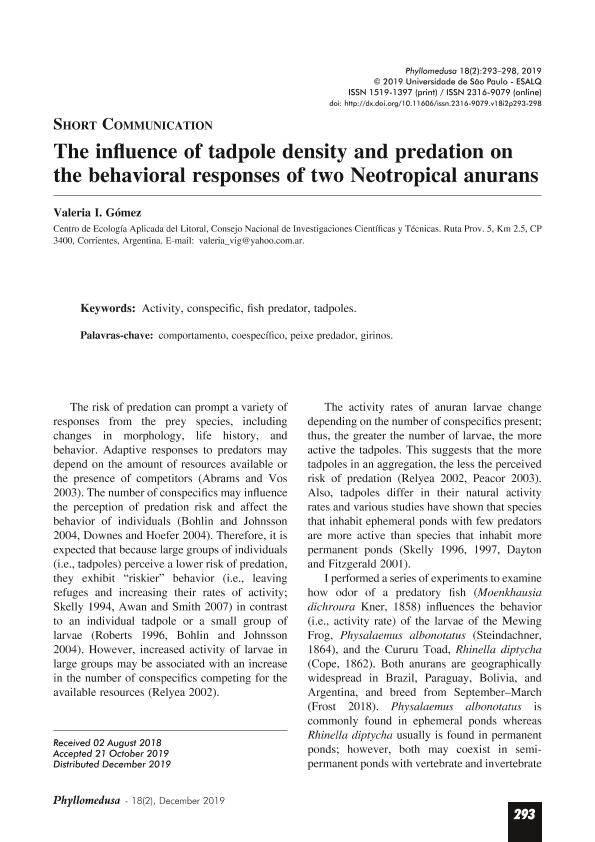Artículo
The influence of tadpole density and predation on the behavioral responses of two Neotropical anurans
Fecha de publicación:
12/2019
Editorial:
Universidade de Sao Paulo
Revista:
Phyllomedusa
ISSN:
1519-1397
Idioma:
Inglés
Tipo de recurso:
Artículo publicado
Clasificación temática:
Resumen
The risk of predation can prompt a variety of responses from the prey species, including changes in morphology, life history, and behavior. Adaptive responses to predators may depend on the amount of resources available or the presence of competitors (Abrams and Vos 2003). The number of conspecifics may influencethe perception of predation risk and affect the behavior of individuals (Bohlin and Johnsson 2004, Downes and Hoefer 2004). Therefore, it is expected that because large groups of individuals (i.e., tadpoles) perceive a lower risk of predation, they exhibit ?riskier? behavior (i.e., leaving refuges and increasing their rates of activity; Skelly 1994, Awan and Smith 2007) in contrastto an individual tadpole or a small group of larvae (Roberts 1996, Bohlin and Johnsson 2004). However, increased activity of larvae in large groups may be associated with an increase in the number of conspecifics competing for theavailable resources (Relyea 2002).
Palabras clave:
ACTIVITY
,
CONSPECIFIC
,
FISH PREDATOR
,
TADPOLE
Archivos asociados
Licencia
Identificadores
Colecciones
Articulos(CECOAL)
Articulos de CENTRO DE ECOLOGIA APLICADA DEL LITORAL (I)
Articulos de CENTRO DE ECOLOGIA APLICADA DEL LITORAL (I)
Citación
Gómez, Valeria Isabel; The influence of tadpole density and predation on the behavioral responses of two Neotropical anurans; Universidade de Sao Paulo; Phyllomedusa; 18; 2; 12-2019; 293-298
Compartir




